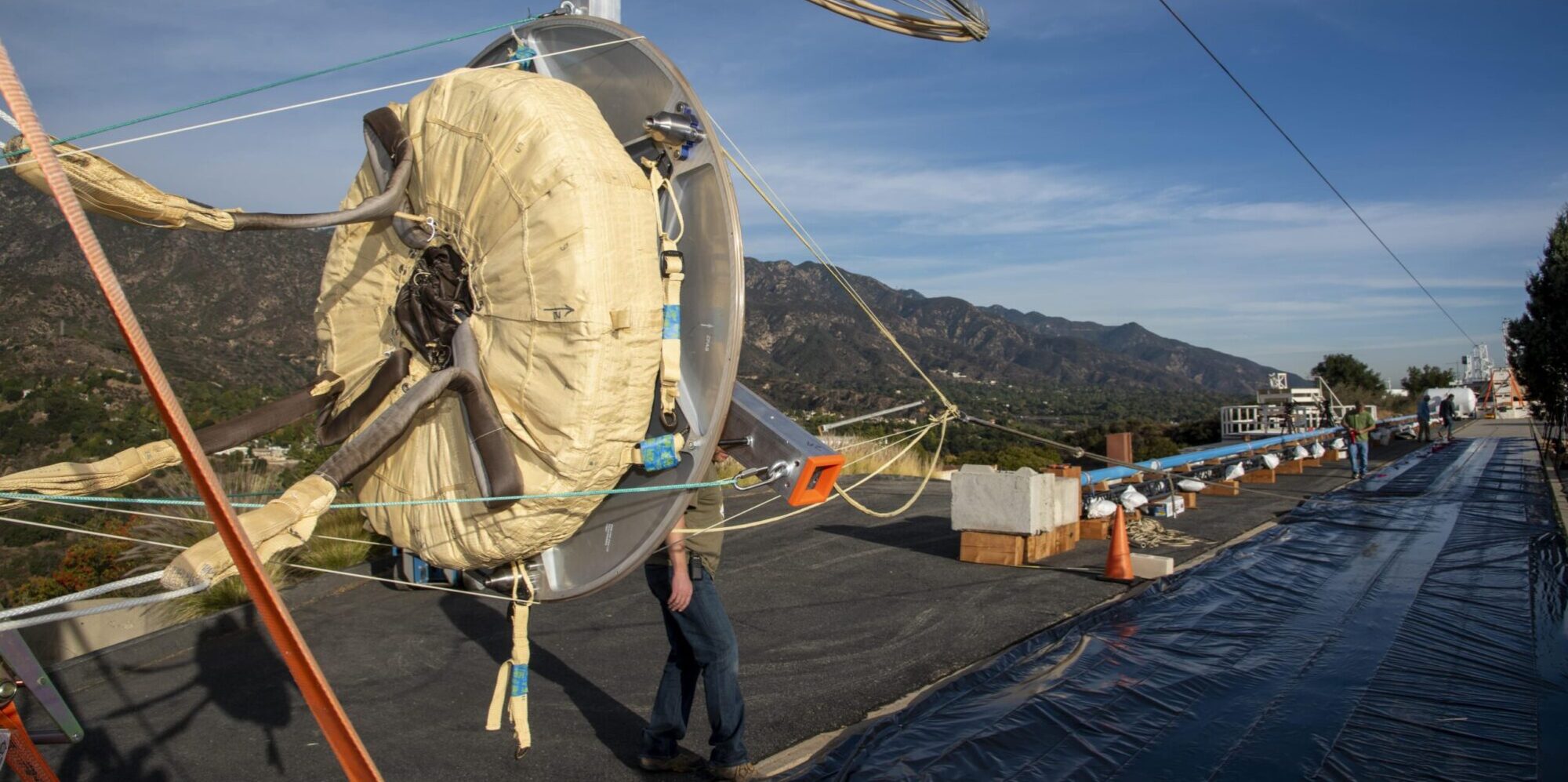Landing a mass greater than 2000kg on Mars’ Southern Highlands – a terrain characterised by mountains and highlands – presents one of the greatest challenges to Entry Descent and Landing technologies and teams today. Low planetary atmospheric density and the size constraints imposed on the heat shield by the launch vehicle fairing limits of what can be achieved with conventional EDL systems.
To overcome the challenges presented by the Martian Southern Highlands both NASA and the European Space Agency invested in decelerator technology research: DAD (Deployable aerodynamic decelerator)and IAD (inflatable aerodynamic decelerator).
ESA’s key project objectives were focused on technologies: a deployable and inflatable hypersonic aerodynamic decelerator technologies to enable high-mass payload landing; and the definition of a European roadmap for future development, demonstration and testing of deployable or inflatable systems.
The team led by Vorticity, with Fluid Gravity Engineering, CGG Safety and Systems, and Thales Alenia Space (Italy), identified two Mars missions, enabled by deployable or inflatable hypersonic decelerators. These missions were a heavy case with a target landed mass of greater than 2 tonnes and a high-altitude case targeting a landing site of 2km above the MOLA datum in the Southern Highlands.
The historical and state of the art solutions for DAD and IAD concepts were reviewed to identify potential system architectures for the candidate missions. Performance and constraints of the different concepts were determined including operational limits, thermal and mechanical load ranges, aerodynamic stability, packing, integration and separation strategies. A summary of the range of concepts studied, their expected benefits and the verifiability of predicted performance was produced.
An assessment of European facilities for aerothermal verification which would be available for qualification of such systems was also undertaken.
The identified DAD and IAD concepts were then assessed to identify a preferred concept for each for further study. The concepts were assessed for compatibility with the reference missions, system complexity, performance, ease of verification, compatibility with European capabilities, and development effort in terms of time and cost. At the conclusion of this activity, two baseline designs and a single reference mission were chosen for further work. The chosen deployable system was based on the Italian IRENE concept which uses a system of wires and levers to deploy and support a flexible thermal protection system (TPS). The chosen inflatable system was a stacked toroid design similar to IRVE and IRDT. The chosen reference mission was the Mars highland mission which is comparable to the ExoMars RSP in terms of entry mass but is delivered to a far more challenging location.
On the basis of the developments required for both DAD and IAD and the potential benefits of each device for the reference mission, it was determined that the inflatable device was the better to base development and any future mission on; however, many of the development activities necessary for this device would also be applicable to the deployable device.


